One of the most abundant and studied bird species in North America, blackbirds have captured the imagination of poets and musicians, from Shakespeare to Paul McCartney, for centuries. Maybe that’s because they maintain such an air of mystery – in spite of their bravado. Certainly the male Red-winged Blackbirds (Agelaius phoeniceus) have plenty of that!
According to Cornell’s All About Birds site (www.allaboutbirds.org/guide/Red-winged_Blackbird/id) “Male red-winged Blackbirds do everything they can to get noticed, sitting on high perches and belting out their conk-la-ree! song all day long”. They live along the southern coast of BC, breeding here as well as throughout the province. On Gabriola, the marshy habitat of The Commons is a favourite breeding spot.
In some areas, RWBs travel in flocks and roost with other blackbird species, and sometimes also with European starlings. Every morning the roost spreads out, travelling as far as 80 kilometres to feed, then re-forms at night. These huge mixed-species roosts are famous for damaging crops. But some studies indicate that the foraging roosts consume large numbers of insect pests and weed seeds, partly compensating for the crops they eat. A 1981 cost-benefit analysis done on cornfields by Dolbeer suggests that blackbird ‘control methods’ only make sense for those crops closest to known large roosts.
Named for the male’s colourful shoulder epaulets, the Red-winged Blackbird (RWB) is relatively stocky and broad-shouldered and has a thin conical bill. He often looks hump-backed when perching, and the male often sits with his tail slightly flared. Females and young males look very different from the glossy black mature males, and are reminiscent of large brown streaky sparrows. Birds of the same family (Icteridae) include the yellow-eyed Brewer’s Blackbird, cowbirds, orioles, grackles, and meadowlarks.
To me, the most fascinating aspect of these blackbirds is their scarlet and yellow epaulets, found on males of at least three years old. The epaulettes are more than just fancy dress – they’re indicators of mood and motive. The degree to which the male displays or hides his epaulets can reveal, for example, if he is seeking a mate or is already paired up, and if he is on his own territory or not. In the dramatic Song Spread Display the male erects his epaulets, hunches his shoulders forward, and lowers and spreads his tail, telling other males to ‘scram!’ When simply resting on a branch within his own territory, with no pressing need to defend or attract, the RWB just partly reveals his red and yellow epaulets, as if to say “This is my kingdom and all is well.” When perching outside his own territory he tends to reveal much less of the epaulet, not wanting, I suppose, to attract the attention of the resident blackbird. And while feeding as a member of a flock in neutral territory, he hides his epaulets as much as possible in order to maintain the peace at mealtime; usually just a thin line of yellow is visible.
The Song Spread Display is also used to attract females. But females actually choose territories and a nest site, not a specific male. Unlike with some songbird species, the female is not wooed by the male’s song or colouring, but by his property. (Does it have standing water with cattails or reeds? Places to hide the nest?) She checks that out for herself! The female builds the nest and incubates the eggs while the male defends the territory, chasing away other males, attacking nest predators, even going after much larger animals.
A highly polygynous species, male Red-winged Blackbirds are known to have up to fifteen mates. And according to recent molecular studies, between one-quarter and one-half of nestlings are sired by a bird other than the territorial male. It’s all about the continuation of the species, and Red-winged Blackbirds are doing very well in that department!
A version of this article was first published in the Flying Shingle on December 10, 2012. Many thanks to Garry Davey for the wonderful photos!



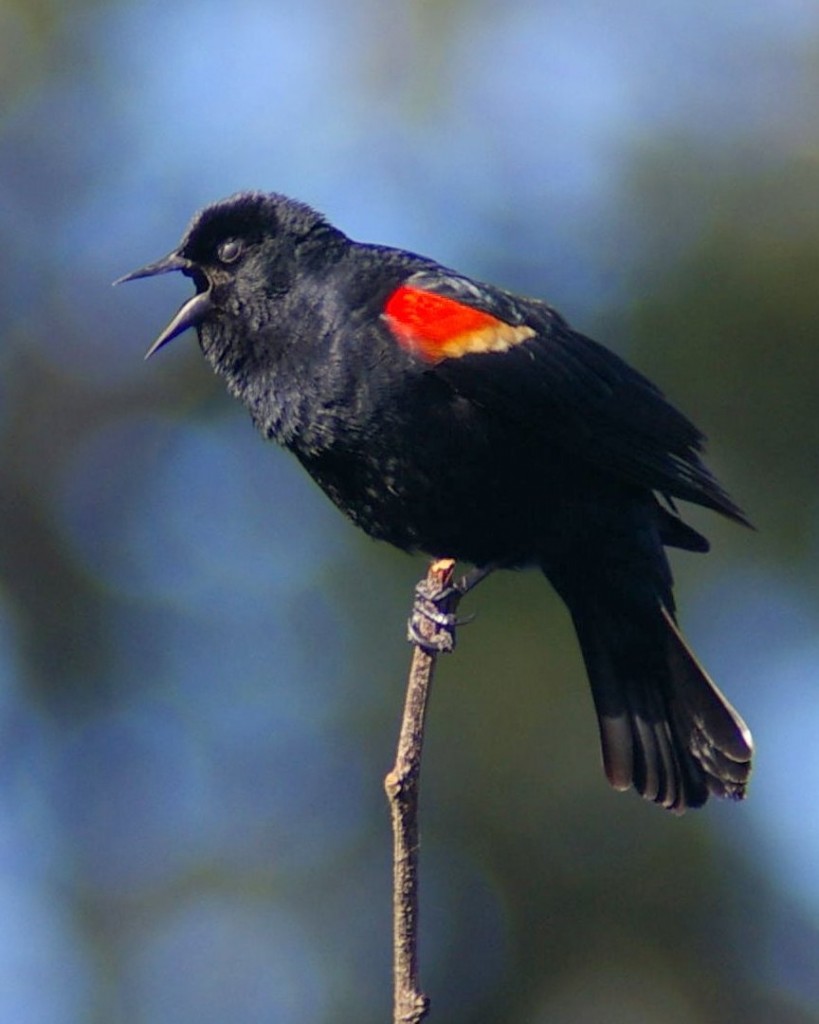
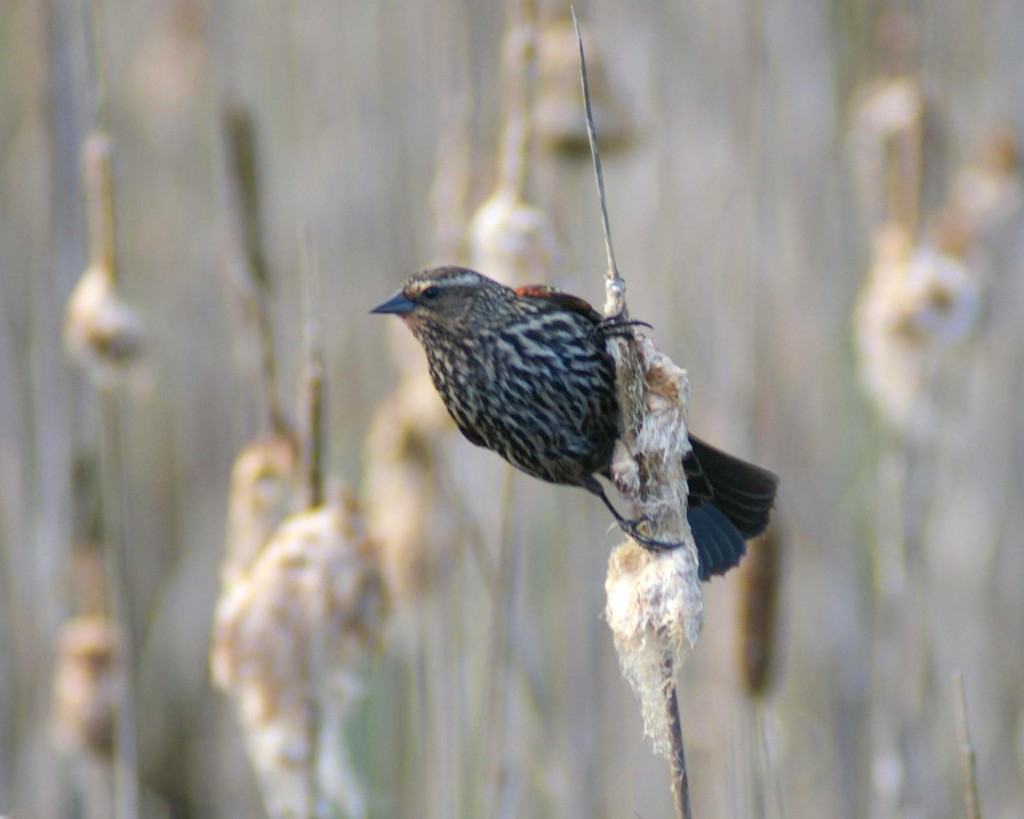
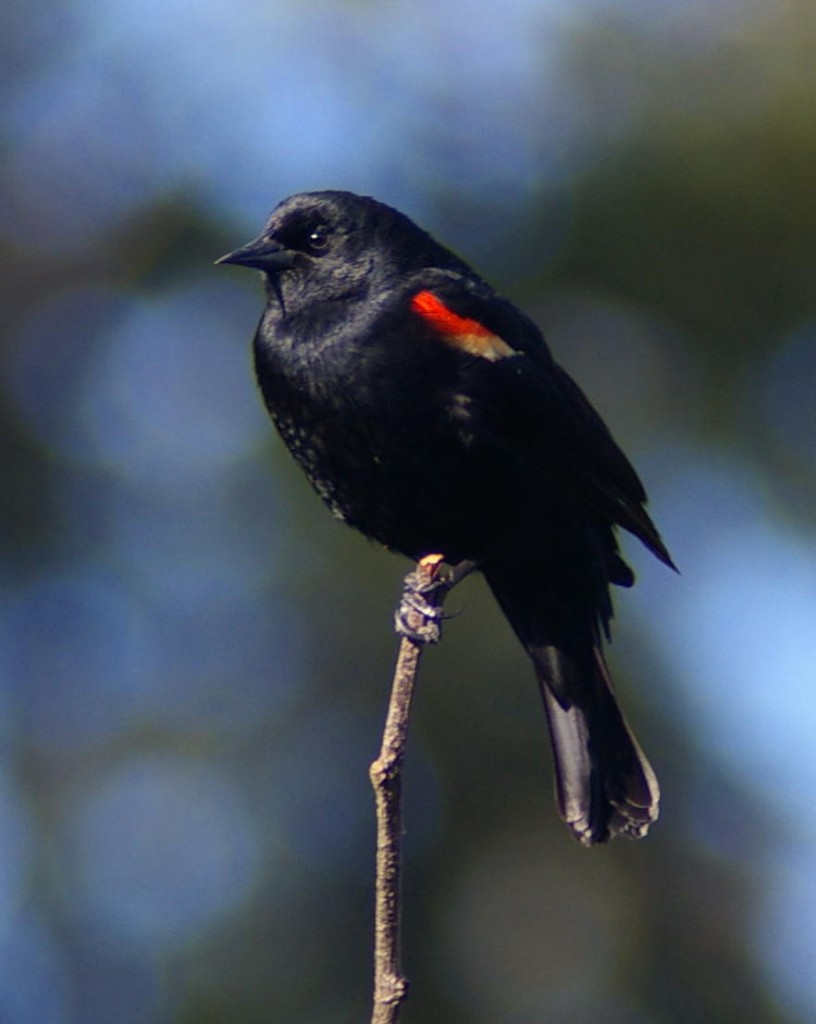
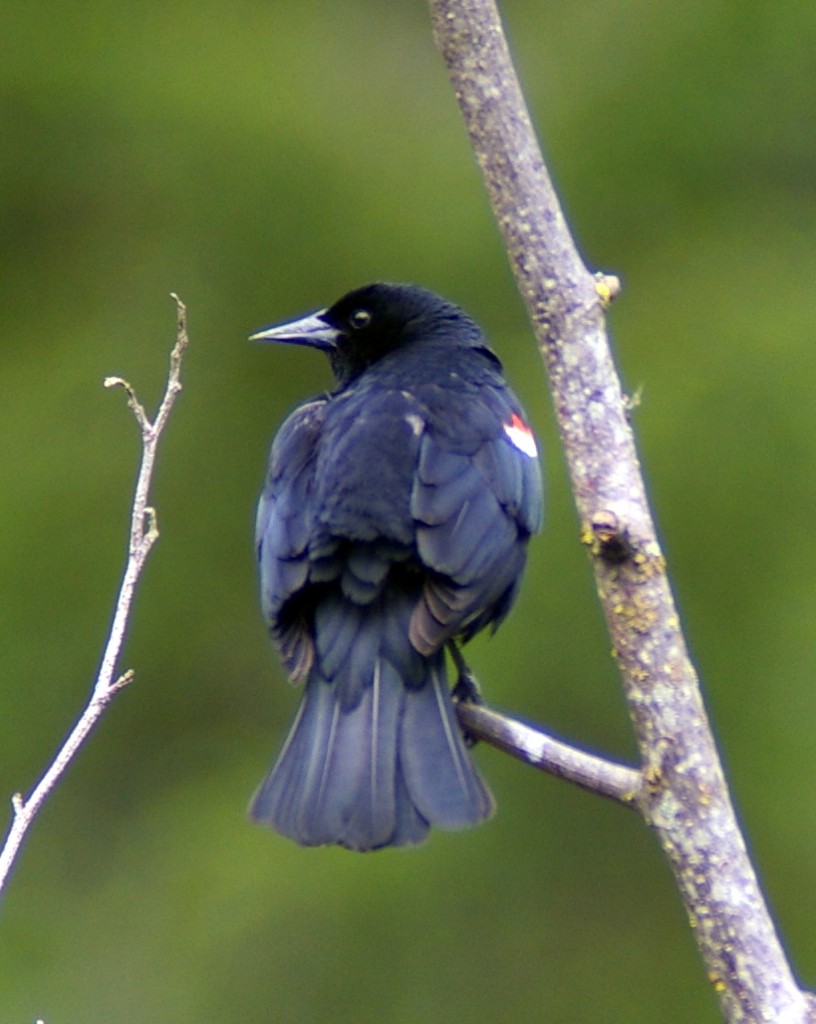
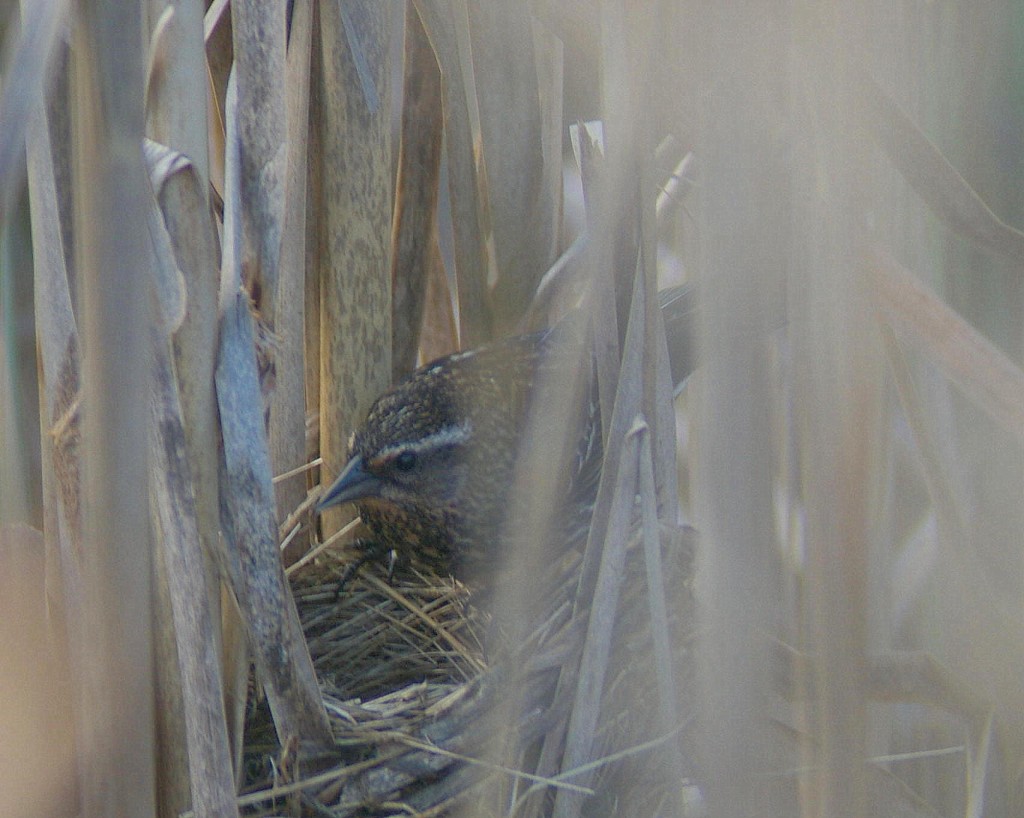
Pingback: Wearing his heart on his sleeve: Interview with a Red-winged Blackbird | lab bench to park bench
Pingback: Blog Birding #185 « ABA Blog
Thank you Sharon for another thoughtful and informational article on our avian friends. It is such a joy to hear birds welcoming the new day with their songs. I will share your article with my friend who sees RWB at her feeder every morning. The accompanying pictures by Garry Davey show the beauty of this black bird and its bold splash of crimson.
Tess – It sounds like you live in blackbird country! Thanks for sharing …
Thank you, Garry. Your photos are gorgeous!
Terrific article Sharon, I’m glad the photos worked out! One of my favourite birds, I just love hearing them every spring in Descanso Valley.
I love when spring hits Alberta and the marshes come alive with male blackbirds vying for real estate. They tend to arrive a few weeks before the females and ferociously defend territory. Being polygamous type birds the males attempt keeping a harem but females are known to sneak out and mate with other males also. In fall huge flocks of varied blackbirds band together to head south. Brewers blackbirds, Rusty-headed blackbirds, Yellow-headed blackbirds, cow birds, and throw a few varied sparrows into the mix and the safety in numbers program is happening. I watched a Prairie Falcon attack a convoy of migrating blackbirds only to be chased away en mass. It must have been quite the shock for the Falcon to find itself chased by a swarm of over one hundred blackbird which dove at it till it retreated. Fascinating to watch.